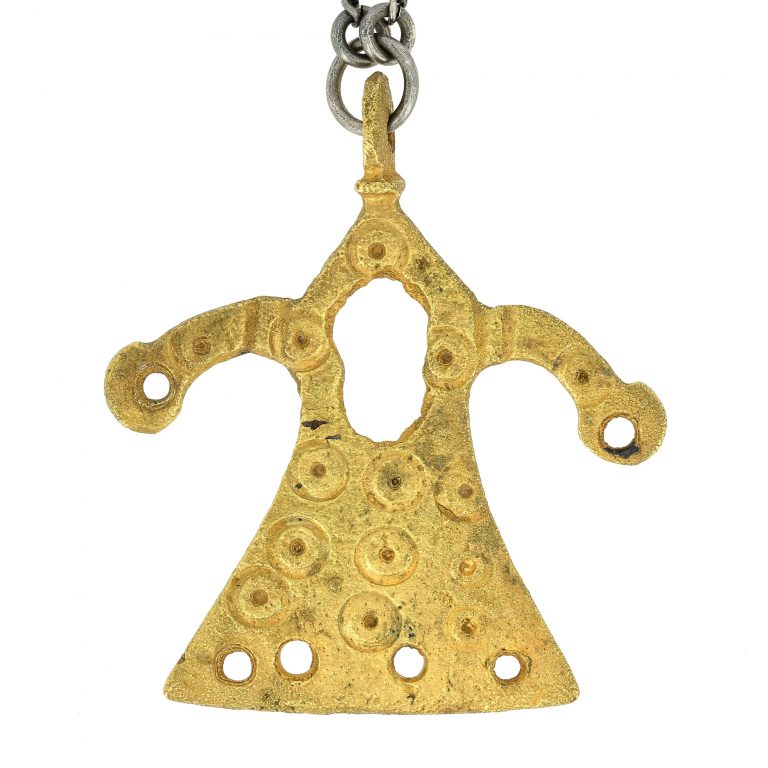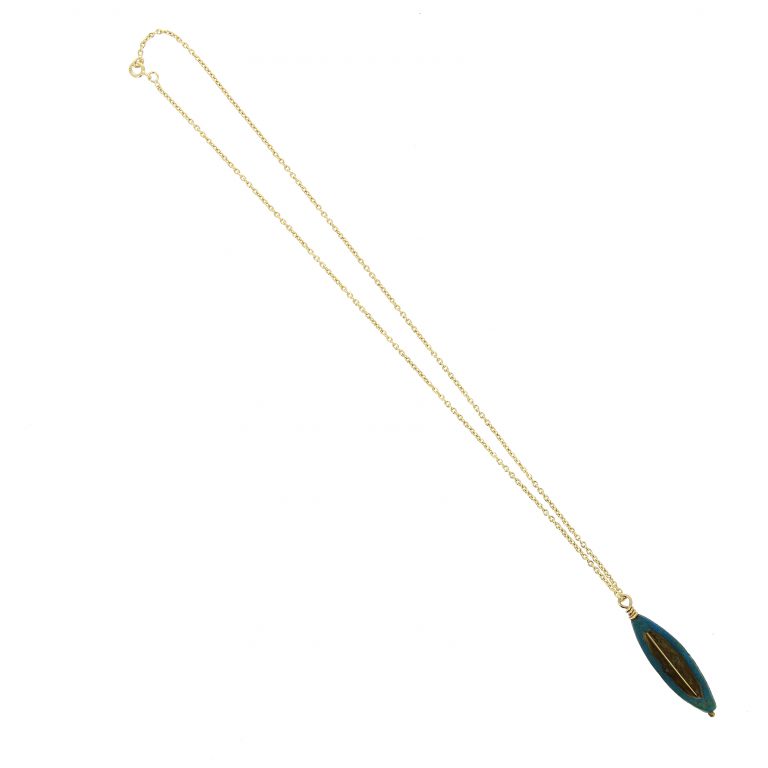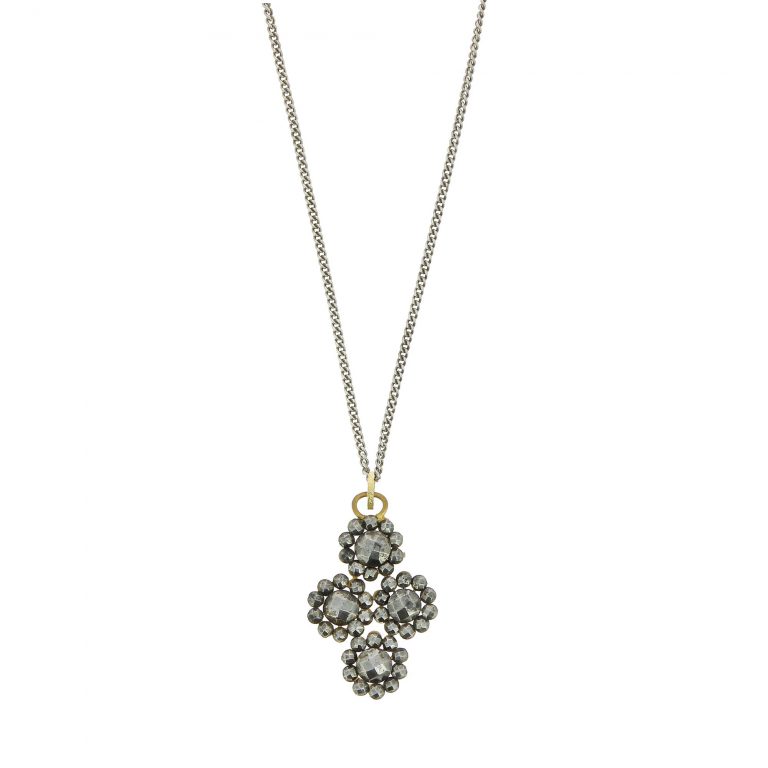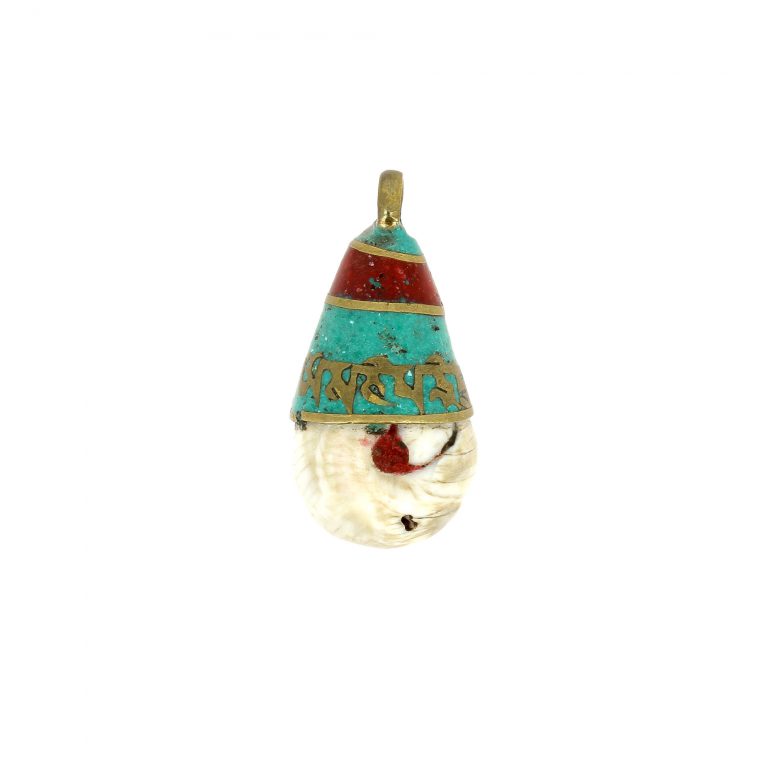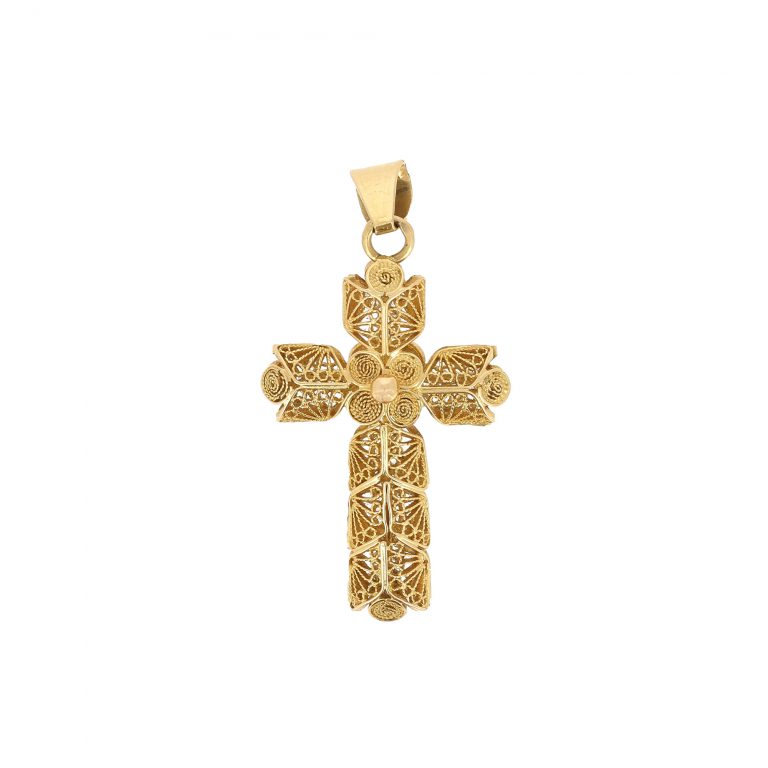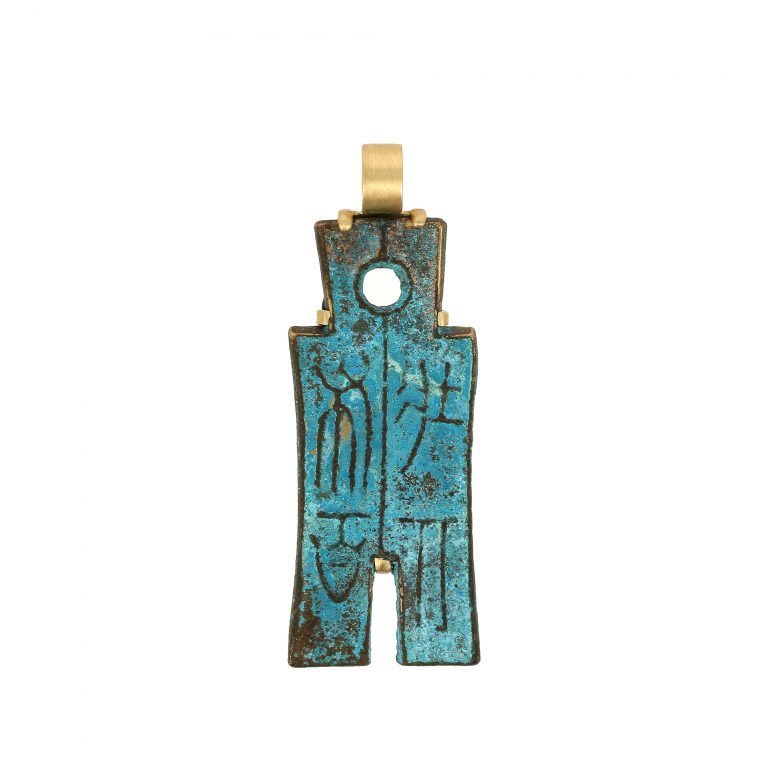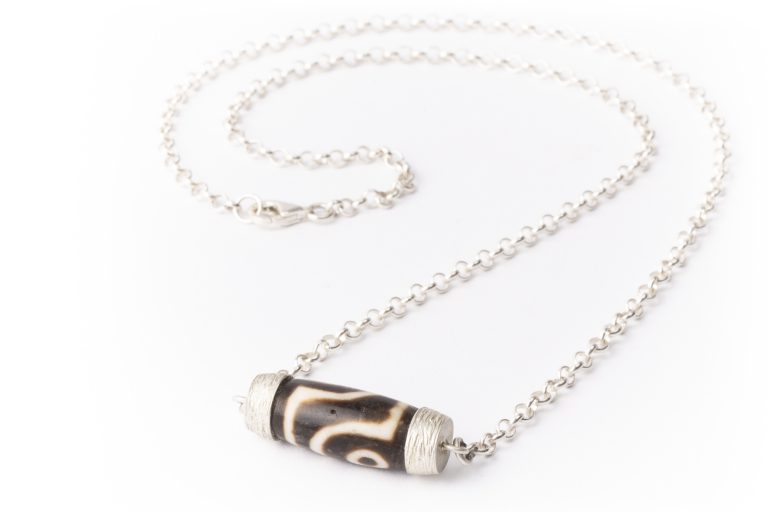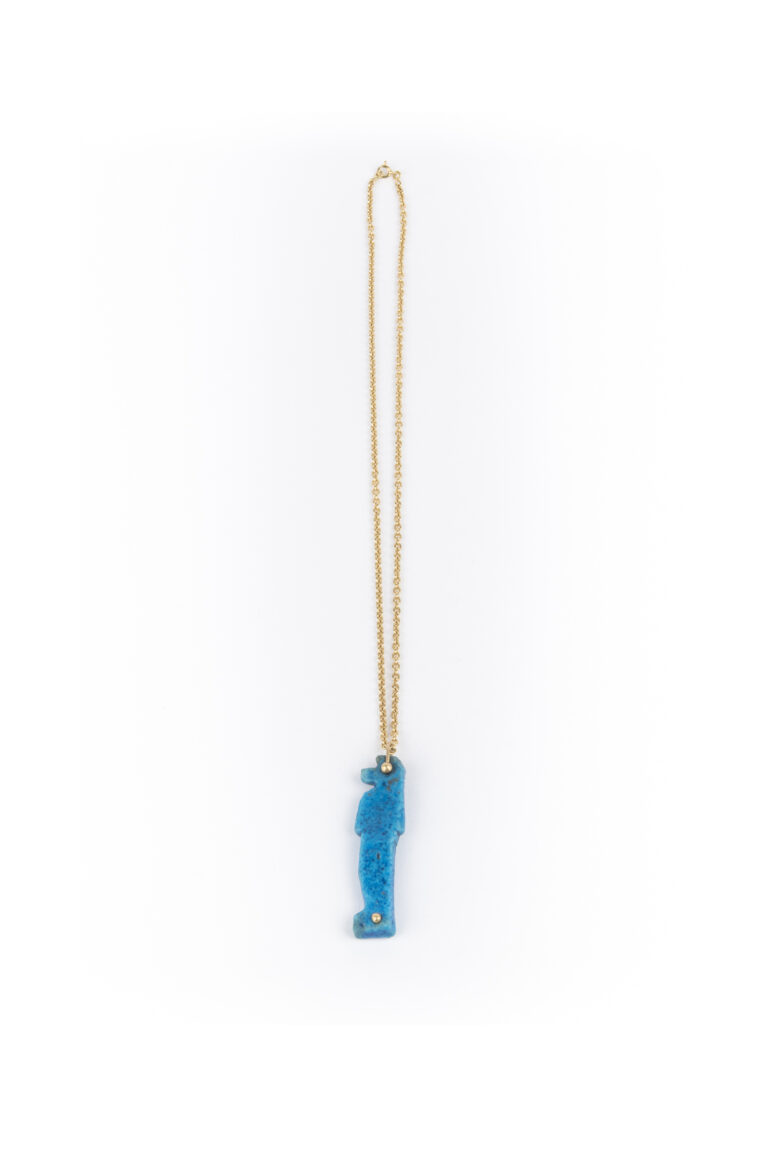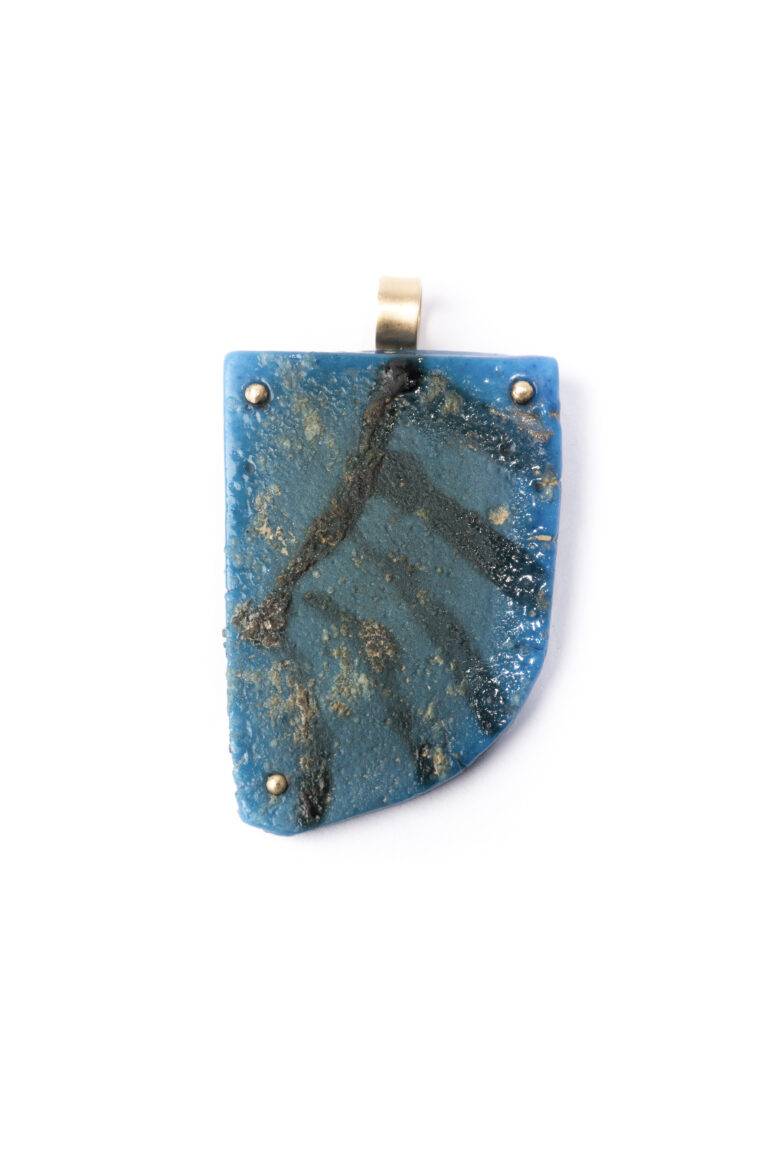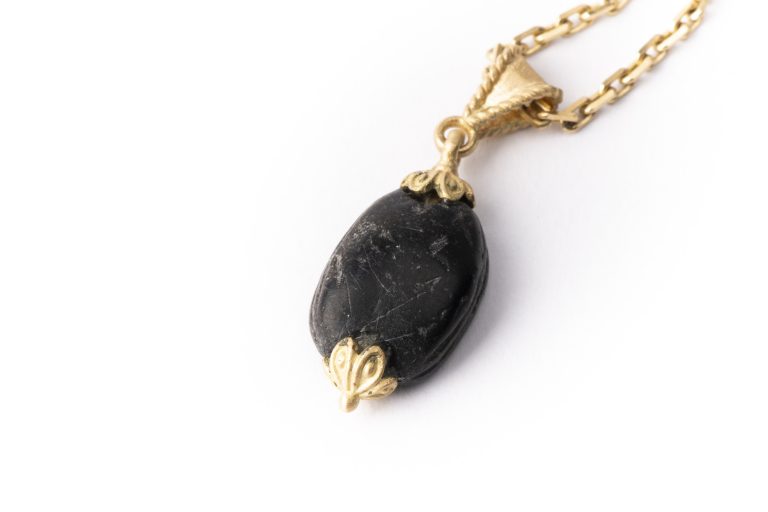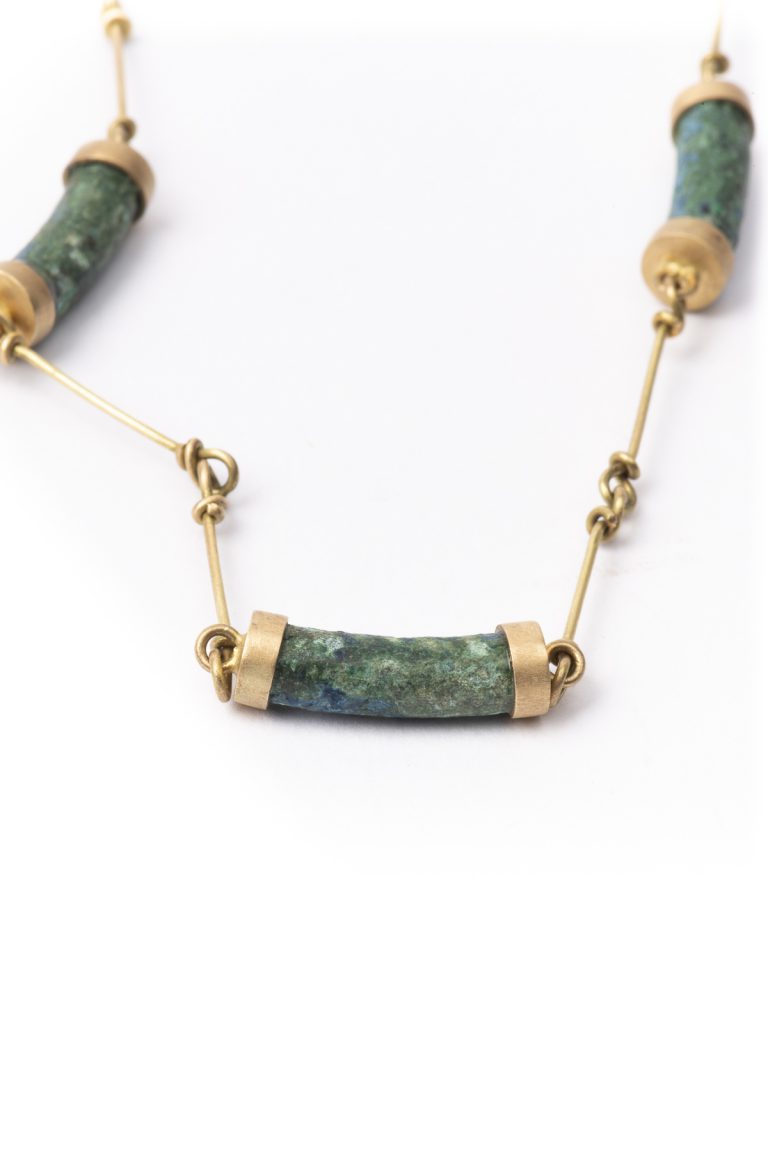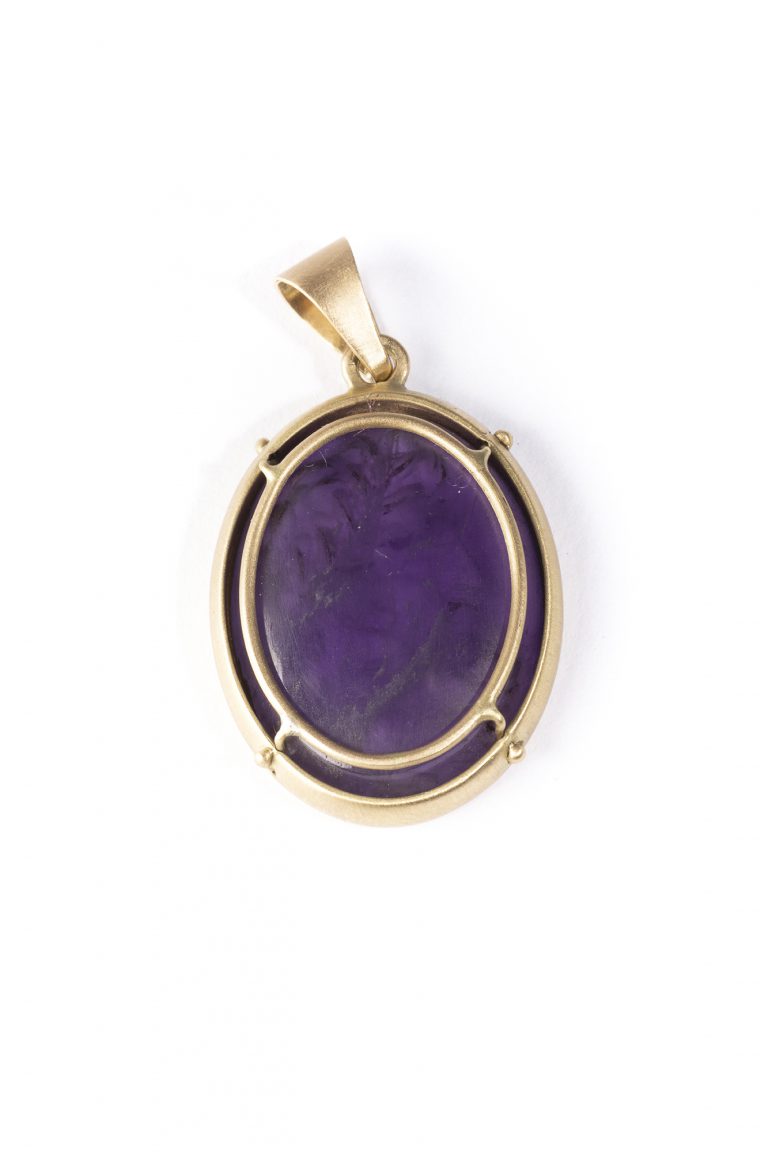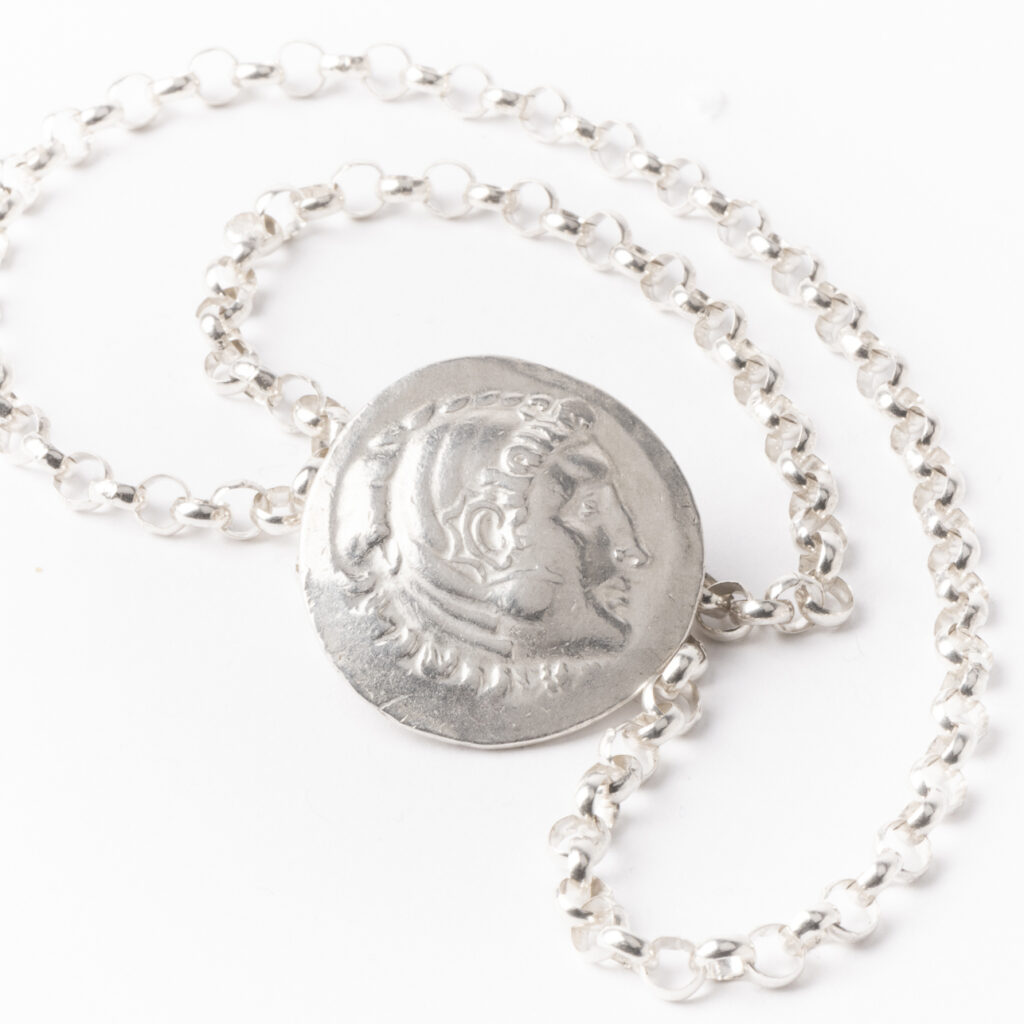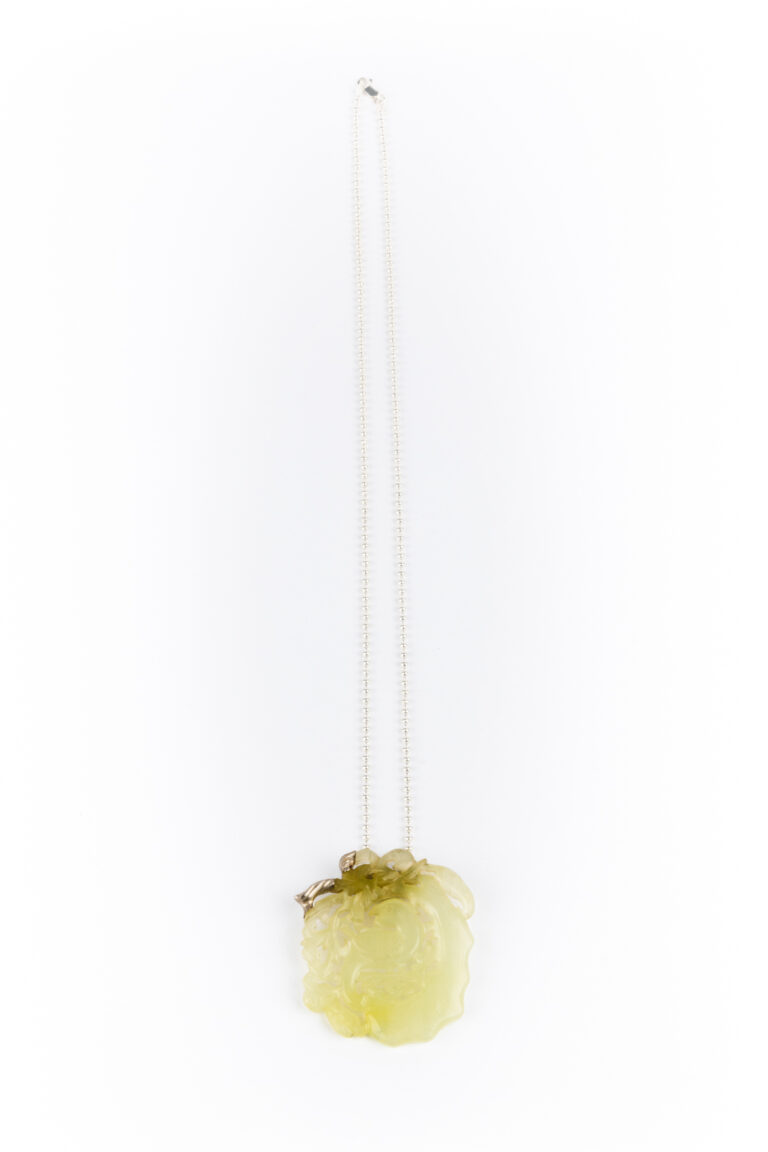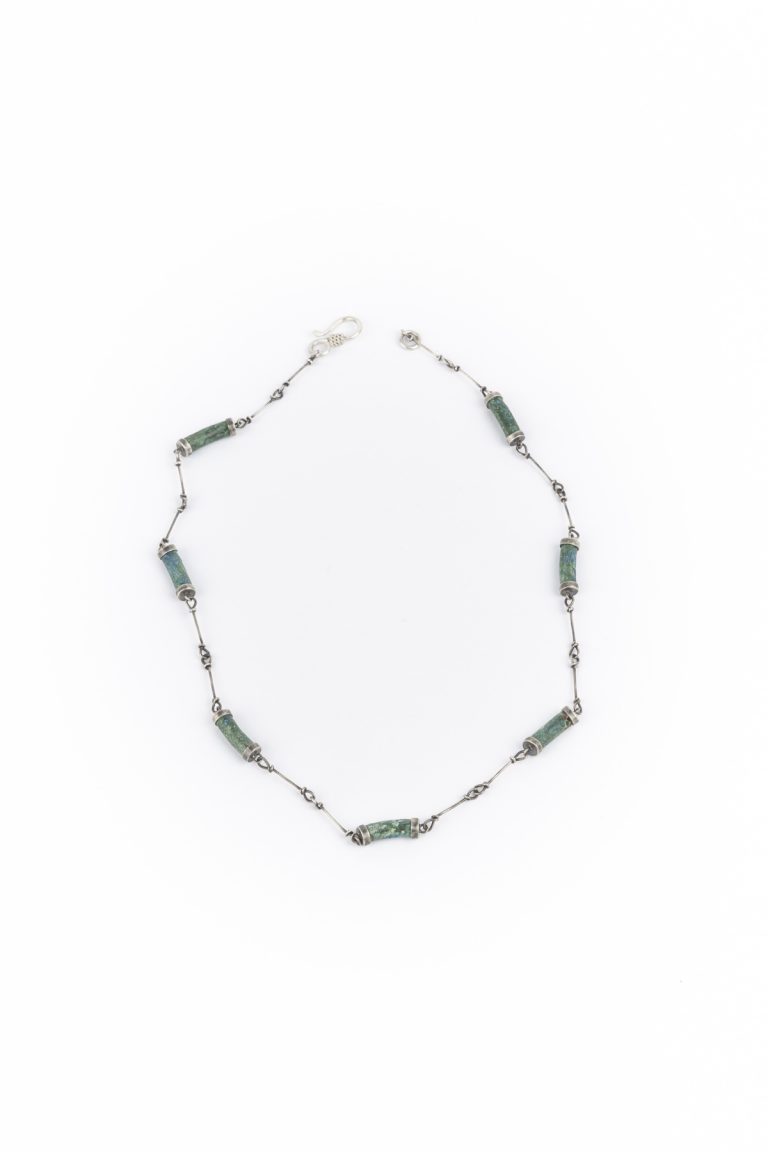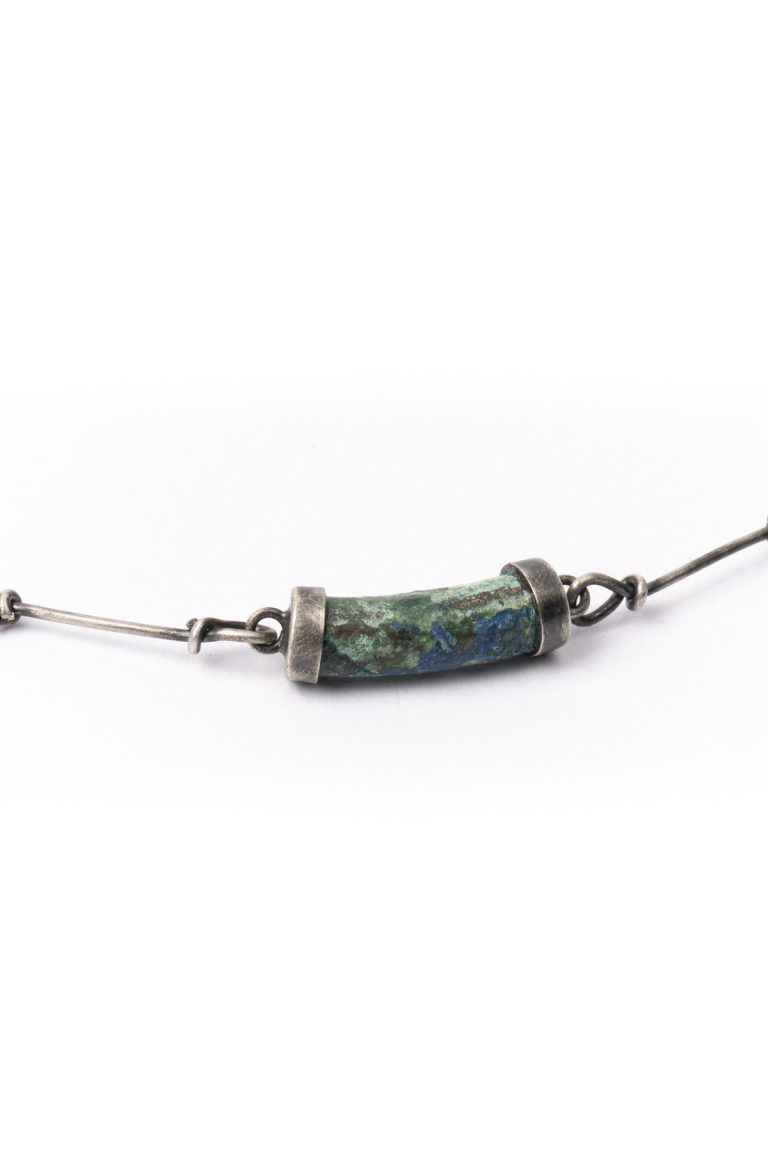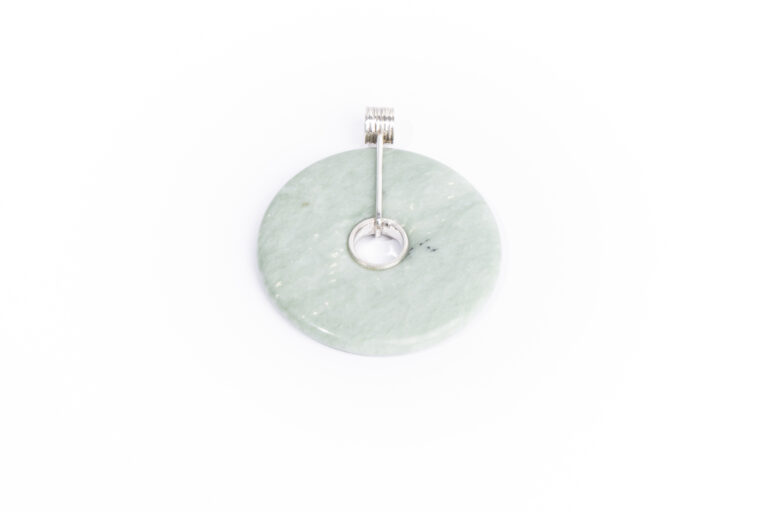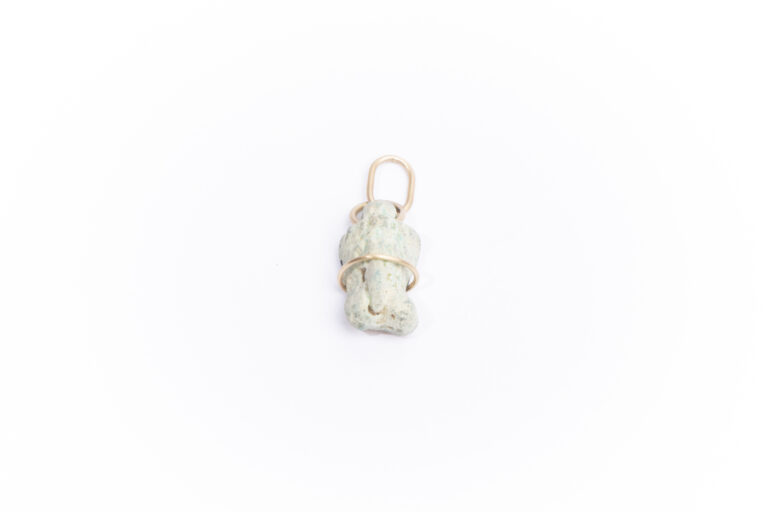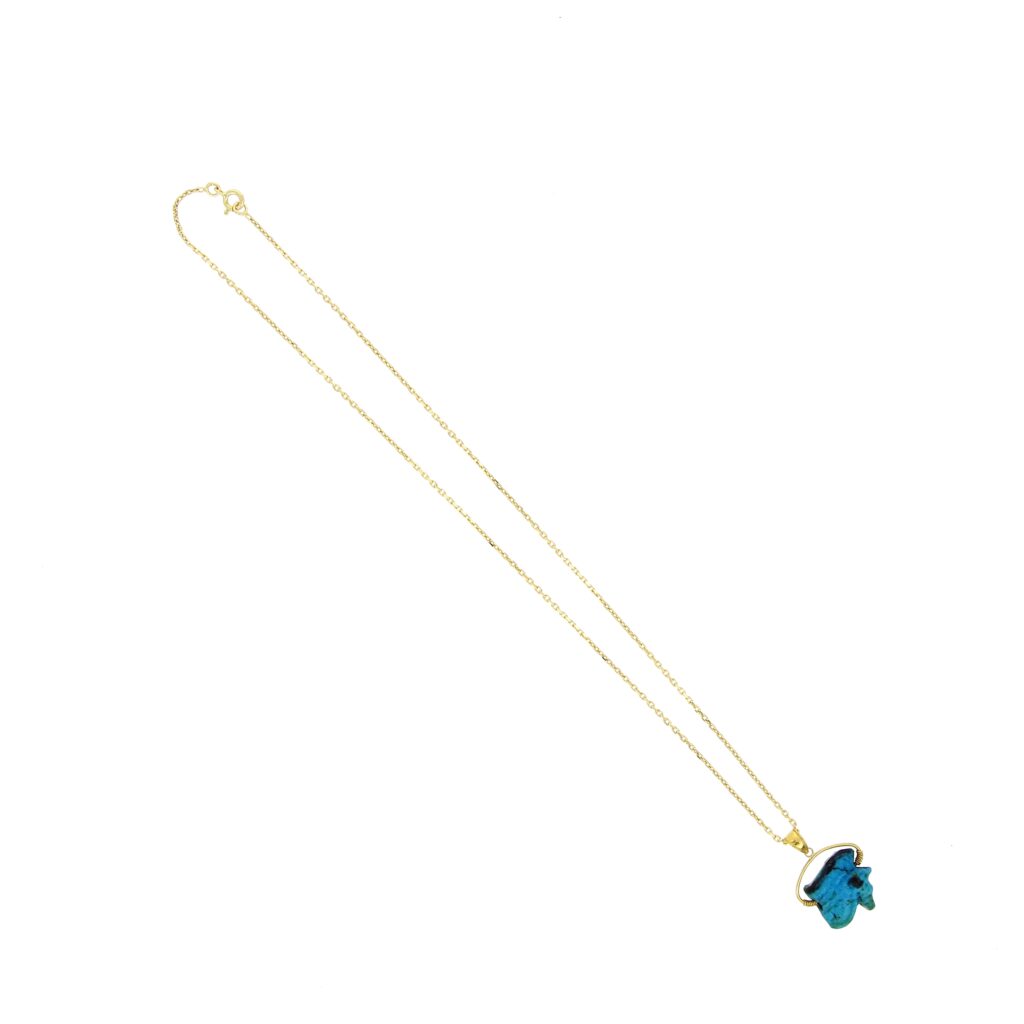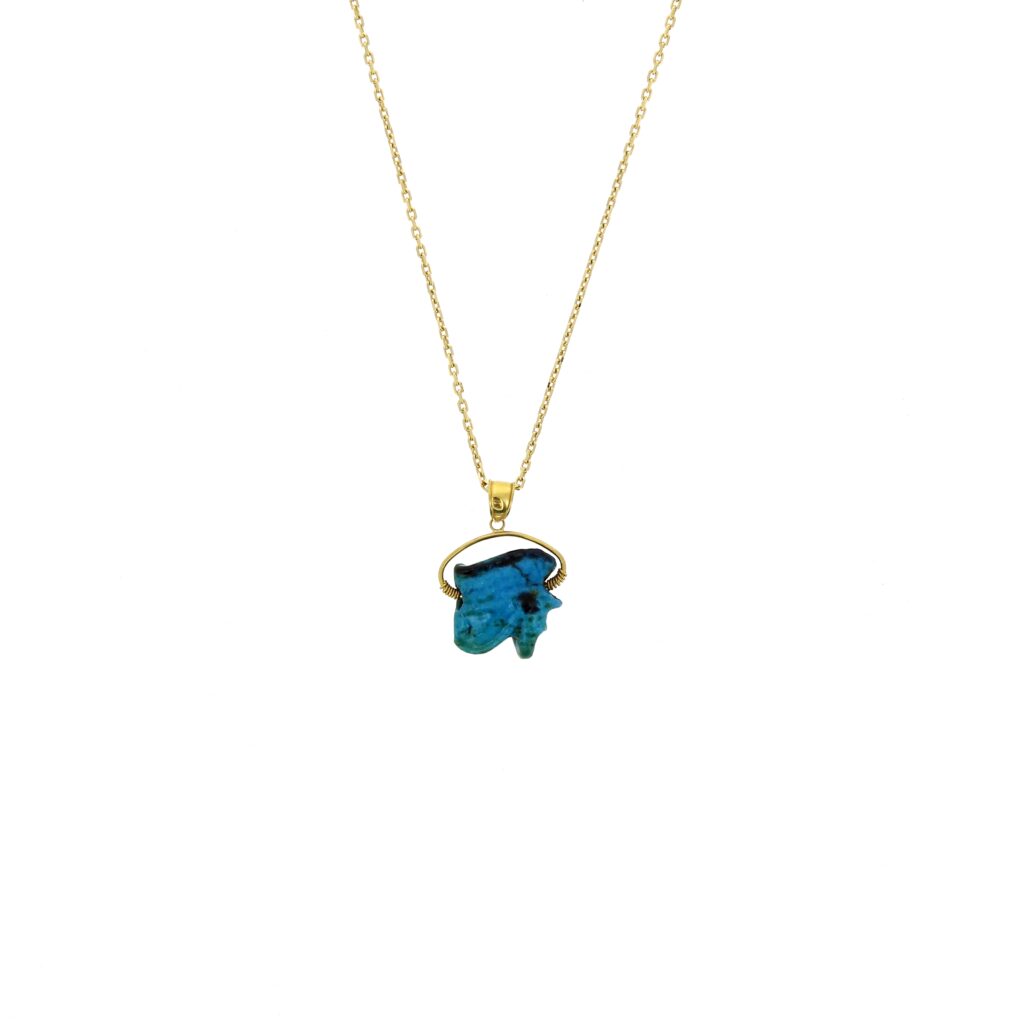
Designer of antique, archaeological and contemporary pendants
Solar Boat
In blue-turquoise enamelled frit, with a gold line running through it.
The solar boat is linked to the cycle of the sun and its god, Ra, the creator of the universe. The cycle of sunrise and sunset is comparable to the cycle of life and death. Ra made this diurnal and nocturnal journey in a boat called Mandjet.
Egypt, 1069-332 BC, Third Intermediate to Late Period.
Berlin Iron
Pendant in cast iron. In terms of form, Berlin iron jewellery is characterised by a return to the stylistic elements of the Gothic period.
The metal, an alloy of iron and carbon, was melted down, moulded, then painted black and given a patina.
Produced by the Royal Prussian Foundries as of 1806
Blue Thot
Pendant representing the god Thoth as a baboon, turquoise earthenware embellished with two 18K gold beads Thoth is the son of Horus and Seth. The birth of the moon is linked to the appearance of the Eye of Horus and the birth of the god Thoth. He acts as arbitrator between the gods, protects Iris during her pregnancy and heals her son Horus. He is represented as a baboon or ibis.
Egypt, Late Period, 750 BC to 332 BC
|
Scarab wing
Large striped wing in blue frit
Frit is an earthenware body made of siliceous paste and crushed glass, covered with a glaze. The most widespread emblem in ancient Egypt was the scarab beetle. A protector of the living, it is a symbol of rebirth for the dead.
Egypt, Late Period, 750 BC to 332 BC
Black scarab
Hard stone, set in 18K gold
This is an amulet, from the Latin amuletum, “way of protecting oneself”. It is an object worn on one’s person to which one attributes the virtues of good luck or protection.
The most widespread emblem in ancient Egypt was the scarab. A protector of the living, it was a symbol of rebirth for the dead.
Egypt, New Kingdom to Roman period
Etruscan bronze necklace
Elements of a bronze bracelet mounted on an antique-style chain, 18K gold
The mysterious Etruscan civilisation, already present in Italy during the Iron Age, had a strong influence on Roman culture. As the Greek historian Herodotus claimed, they were of Anatolian origin.
Roma, 2nd to 4th century AD
Hercule Amethyst
Amethyst intaglio representing the face of Hercule as a hero. Set in 18k gold.
The son of Jupiter/Zeus, King of the Gods, Hercules is descended from the Greek Heracles. To the Romans, he represented abundance, compassion and generosity.
Ancient Roma, 3rd to 1st century BC
Alexander necklace
Consisting of a silver tetradrachm of Alexander the Great bearing the horn of the god Ammon, on the reverse Athena, goddess of war and wisdom.
Alexander was born in 356 BC, the son of Philip II, King of Macedonia, who was assassinated in 336. At the age of 20, Alexander embarked on a series of conquests, penetrating the Asian continent as far as the Indus, conquering Anatolia, Lebanon, Egypt and Persia, and founding numerous cities.
This epic came to an abrupt end in Babylon: Alexander, who was suffering from a high fever, died in 323 without an heir.
Thrace, 306 to 282 BC
Fire-breathing Dragon
Pendant representing a fire-breathing dragon. Silver-set jadeite stylising foliage.
In feudal society, the dragon symbolised the sovereignty of the emperors and its attributes – luck, power and nobility of soul – were exclusively reserved for them.
Qing Dynasty, 1644-1912
Heart Amulet
Carnelian heart mounted on an 18K gold clasp.
Amulet in the shape of a heart, known as the Ib, considered by the Egyptians to be the most important organ of the human body. The seat of thought and consciousness, the source of feelings and actions, it is also the location of the memory that will be able to testify before judges. This is why it was symbolically weighed to determine whether the deceased was worthy of the afterlife.
Carnelian represents flame and heat, and was used to protect against the wrath of the gods.
Egypt, New Kingdom to Ptolemy, 1550 to 32 BC
Etruscan bronze necklace
Elements of a bronze bracelet mounted on an antique silver chain.
The mysterious Etruscan civilisation, already present in Italy during the Iron Age, had a strong influence on Roman culture. The Greek historian Herodotus claimed that they were of Anatolian origin.
Roma, 2nd to 4th century AD
Bi Disc
In jade, mounted on a silver line and bezel
Bi discs were the first ceremonial objects, used to celebrate the cult of the Sun and the Heavens. The central hole evokes the opening to eternal life.
The bi is related to the celestial and sometimes the earth, which suggests that its circular shape has a symbolic, even esoteric meaning.
Jade is the most precious stone in Chinese civilisation, the stone of immortality to which the five Confucian virtues are attached: benevolence, loyalty, wisdom, propriety and righteousness.
China, – 1800 to minus 600 BC
Phallus Amulet
Stone, set with gold thread.
In ancient Greece and Rome, the representation of the phallus was not linked to eroticism, but to fertility and protection.
The object was often hung as an amulet around children’s necks to protect them from disease.
They were also placed on the doors of houses and public buildings to ward off the evil eye.
Greek, Baskanion, Egypt to Ptolemy, – 700 to 1st century AD
Udjat Amulet
representing the eye of Horus
Horus is one of the oldest Egyptian deities. He is most often depicted as a falcon wearing the double crown of the pharaohs, the pschent. His name means “the Far”, in reference to the majestic flight of the bird of prey. He is also called “oudjat”, which means “complete”.
Horus thus represents the pharaonic monarchy, and is the protective and dynastic god.
In vitrified lapis lazuli, mounted on an 18K gold chain.
Egypt, circa 500 BC
Creation of luxury jewellery based on amulets, coins and intaglios from ancient civilisations. Entirely hand-mounted, each piece of jewellery is rare and unique
